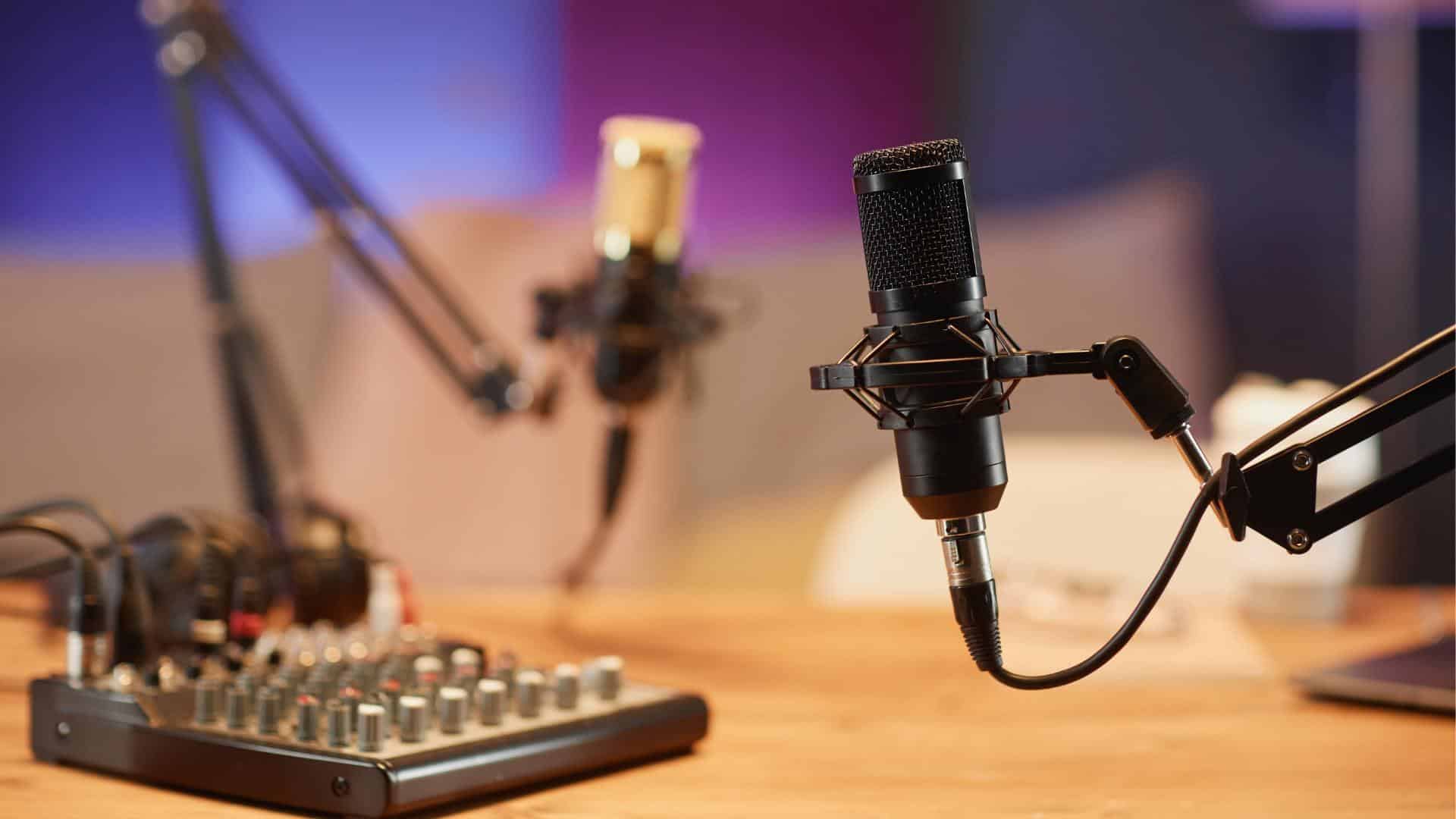Getting one person to listen to your podcast is hard enough. But how to make one that can travel across borders? That was the task WePod took on.

Equipment in a podcast studio. (Photo by SeventyFour)
This story and podcast were produced as part of WePod, an innovative multi-partner, cross-border project to support the growth and sustainability of the European podcasting ecosystem. WePod is powered by a consortium of journalists, podcasters, researchers, designers and educators from seven European countries, co-funded by the European Union Creative Europe Programme.
Developed in response to the changing European news media sector, WePod created a collaborative framework for the production, distribution, promotion and monetization of journalistic podcasts. For its part, News Decoder coordinated communication and dissemination activities, and developed and held training workshops for youth.
Learn more about the project at wepodproject.eu.
Javi Caminero works as a podcast producer at Prisa Audio in Madrid. He remembers how the radio was always on at home in the small town where he grew up. “There was always a voice in the back,” he said. “It was just part of our lives.”
Caminero and Prisa Audio, with eight other partners across Europe, made up WePod, a project co-funded by the European Union with the goal to produce podcasts, empower and train independent podcasters and create a hub for the industry in Europe.
A key part of the project was Sounds Like Europe, a podcast series that explores the podcasting industry. In the series Caminero interviewed journalists, sound designers and editors from the European podcast industry.
In this first podcast in the series Caminero interviewed Alexander Damiano Ricci, Chief Operating Officer and founding member of Bulle Media — now Europod — in Belgium to answer this question:
How do you start a cross-border podcast?
Back in 2013, Ricci worked as an Italian editor at the pan-European newsroom Café Babel.
“We had, in the same newsroom, six different linguistic versions of six different editors and each editor was responsible to edit his own version or her own version, of course,” Ricci said. “But then we had cross translations between different different articles. So that was already a kind of cross-border experience itself and it really kind of framed my mindset, I guess.”
At WePod, Ricci and the WePod team produced podcasts from different companies in different countries in Europe where different languages are spoken. The challenge was to create podcasts that could appeal to people across borders.
Listen to the podcast here:
“To me the essential ingredient is that two persons or two teams from different countries collaborate, right?” Ricci said. “So who’s doing the podcast itself makes it really a cross-border operation.”
A podcast becomes cross-border, he said, when you bring different perspectives from different countries together in one story. There are two ways to make that story compelling to both the audiences and to Europe as a whole.
The first way, he said, is to have a strong story that articulates across borders and is relevant for two countries. It can be a very specific story that relates to feelings and notions interesting to anyone. The second way is to start from a general topic and then find a story within that topic.
“I’d really love that all podcasts speak to every audience we aim to target,” Ricci said. “I think it’s the biggest challenge to make sure that every podcast finds its audience in every national context.”
At WePod, the team divided the production process into stages.
First there was a pre-editorial stage where they brainstormed ideas. Then came a pre-production phase, where within the topic they reflected more concretely about the characters of each podcast.
“How do the different episodes talk to each other?” Ricci said.
Provide room for perspectives.
That was followed by the production phase. That involved going on the ground, setting up interviews and working on scripts and language transcriptions.
Finally, in the post-production phase everything textual became a finished podcast, ready to be promoted and distributed.
Caminero said that every podcast WePod did was produced in at least two languages, the first in the native language of the podcast producer and in English for a cross-border audience. “Obviously, this creates specific challenges because not all versions can be identical,” Caminero said. “You need to make room for adaptations.”
Ricci said that it was important in a big production like WePod, with people from different nationalities, to give people room to express themselves. “I think it takes time just to sit around the table, understand each other,” Ricci said.
This becomes important when you have deadlines and deliverables. “You’re pretty much kind of freaking out to meet everything, every deliverable you have to meet, every deadline,” Ricci said. If you try to impose a top down approach, it won’t work.
“So, I think it just takes a lot of talking before action,” Ricci said.
Questions to consider:
1. What does it mean to be cross-border?
2. How can a story that is interesting in one country have resonance in another?
3. Can you think of a topic important to your region that would also be important to people elsewhere?
